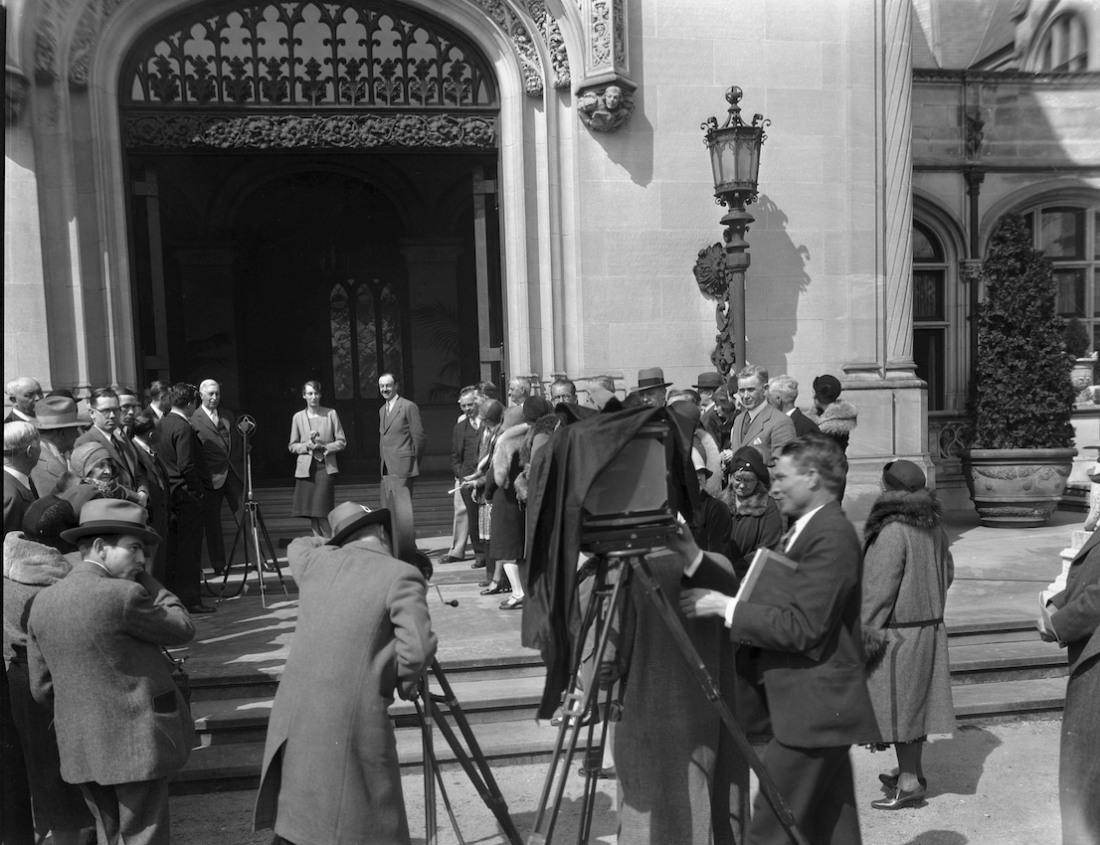On Feb. 16, 1930 — four months after the stock market crashed — the Sunday edition of the Asheville Citizen-Times congratulated the Asheville Chamber of Commerce for a job well done. The organization, the paper wrote, successfully “persuaded [Cornelia Vanderbilt Cecil and her husband, John Francis Cecil] to open Biltmore House to the public[.]”
The private mansion, completed in 1895 by Cornelia’s father, George Vanderbilt, would attract “thousands of tourists” upon its March 15 opening, the paper predicted.
Soon, newspapers from across the country carried the announcement, the Asheville Citizen-Times reported on March 2, 1930. Clippings from The New York Times, The Chicago Tribune, The Boston Post and several other publications had been received by the Chamber of Commerce, the article added.
Admission prices were not initially released in the weeks leading up to the big event. Papers, including the Arizona Republic and Michigan’s The Times Herald both casually projected entry would run between 25 and 50 cents (or roughly $4-$8 in today’s dollar). But on March 12, The Asheville Citizen reported the official fee: $2 for adults and $1 for children 12 years old and younger (or roughly $31 for adults and $15.50 for children in today’s dollar). Despite the higher costs, criticism, if any, was seemingly absent in print.
The Chamber of Commerce ran an ad in the following day’s paper, asserting that Biltmore provided Asheville with “the most outstanding tourist attraction of any resort in the country.”
On March 15, 1930, an estimated 300 people attended the grand opening. In the next day’s paper, The Asheville Citizen described “photographers, Pathe sound picture men, newspaper men and visitors” crowding the entry “eager to be the first to gain access to the great manor.” But according to the article, the honor went to Asheville’s mayor, Gallatin Roberts.
Five days later, the paper spoke with Frank B. Weeks, former governor of Connecticut and a visitor to the estate. “Opening of Biltmore House furnishes one of the greatest attractions Asheville could have added to its list of attractive things,” Weeks declared.
However, the paper continued, the former politician also offered words of caution. “Ex-Governor Weeks does not believe that a city should try to gain its full growth and attain its greatest possibilities through the entertainment of tourists alone,” The Asheville Citizen wrote.
In the same article, Weeks provides an optimistic take on the country’s overall economy:
“Mr. Weeks said that he has no fear of the future for any portion of the country and that business conditions are already growing healthier, recuperating from the crash, and that the future years will be ones of careful business activity, but nevertheless progressive and prosperous. He believes that Asheville has a double advantage and should carry along both its lines, those of attracting industries and tourists together.”
As the year progressed, Weeks’ hopeful outlook proved just that. By November, Central Bank and Trust Co. closed in downtown Asheville. Three months later, Roberts —Biltmore’s first official guest — killed himself with a .38-caliber revolver in the bathroom of his law office inside the Legal Building on Pack Square. At the time, the then-former mayor was facing corruption charges related to mismanagement of city funds. (For more, see “Asheville’s bond fears: The legacy of a financial nightmare,” Oct. 20, 2016, Xpress)
Despite the growing economic catastrophe, Biltmore welcomed 39,052 guests between its opening day and June 30, 1931. Visitors arrived from every state, as well as 42 countries — among them Australia, Japan, Syria and Sudan.
Editor’s note: Peculiarities of spelling and punctuation are preserved from the original documents.




Great timing.